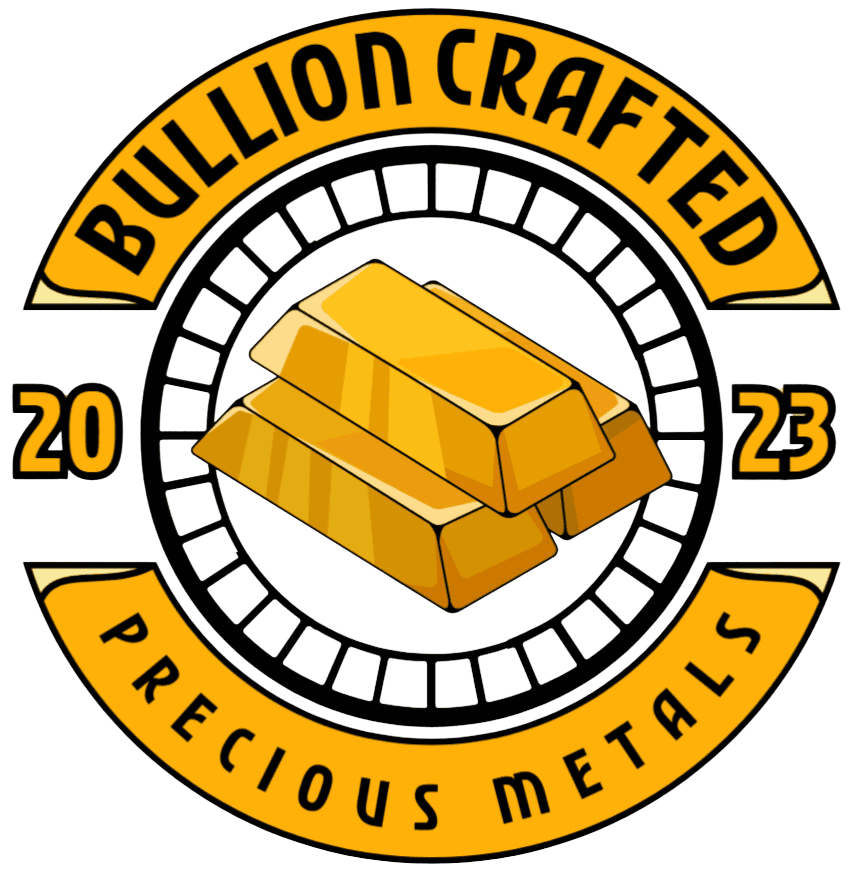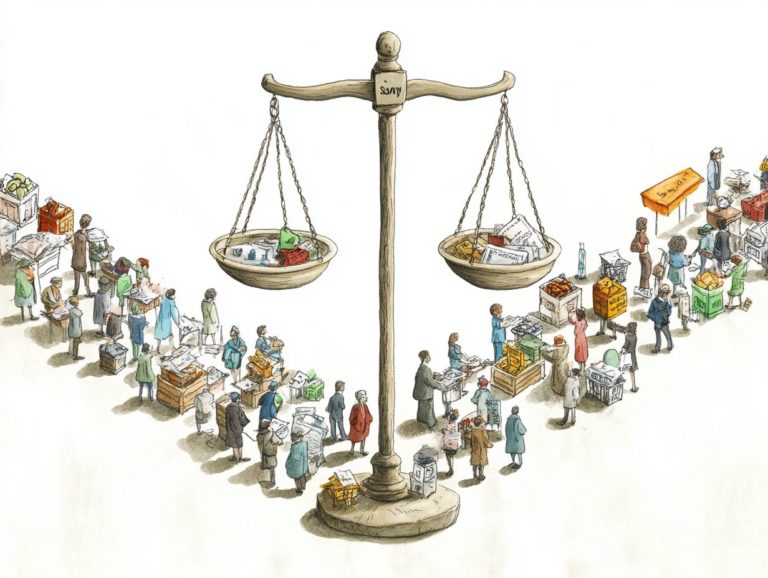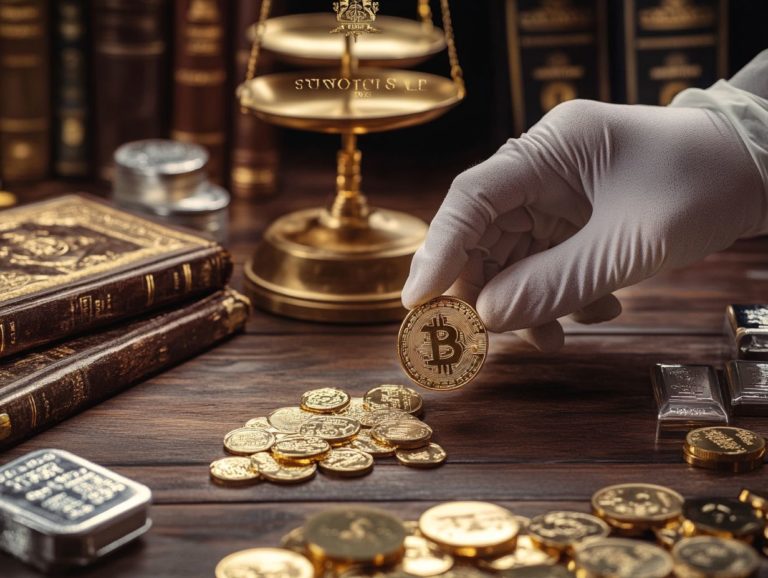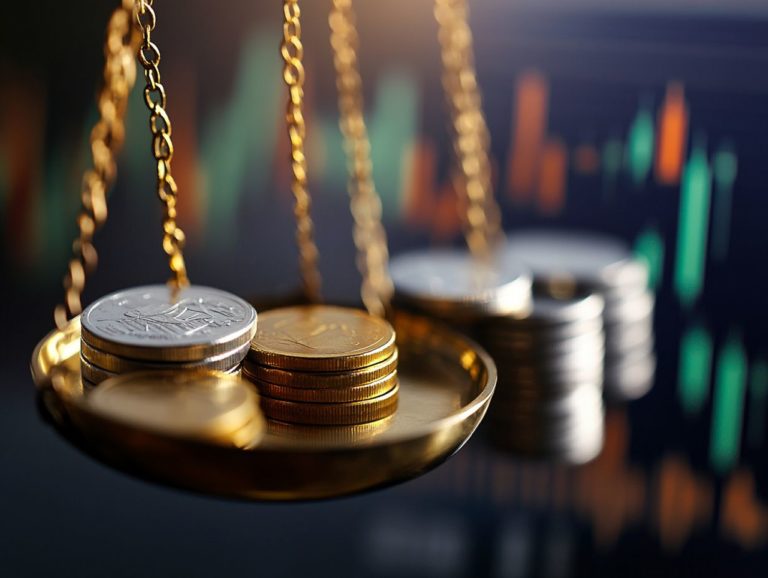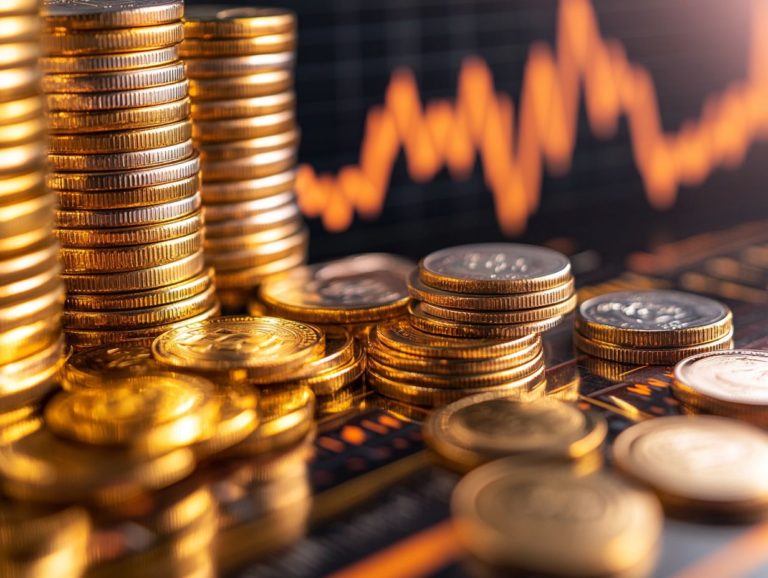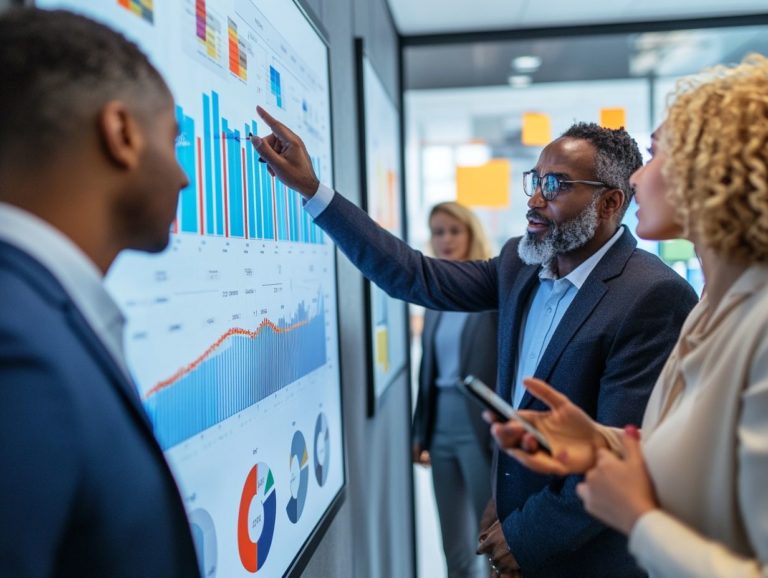How to Assess the Value of Precious Metals
Precious metals have long been viewed as a secure haven for investors and a fundamental aspect of wealth preservation. But what do they entail, and what drives their value?
This article delves into the key factors that influence the value of precious metals, including economic conditions, supply and demand dynamics, and industrial applications. You ll discover methods for assessing their value, from understanding the difference between market value and intrinsic value to evaluating purity levels.
We will also share essential tips for wise investment in this asset class. Join us as we unravel the complexities of precious metals, equipping you with the insights needed to make informed investment decisions.
Contents
- Key Takeaways:
- Factors Affecting the Value of Precious Metals
- Methods for Assessing the Value of Precious Metals
- Tools for Evaluating Precious Metals
- Tips for Investing in Precious Metals
- Frequently Asked Questions
- 1. What are the different methods used to assess the value of precious metals?
- 2. How does the spot price determine the value of precious metals?
- 3. Why are weight and purity important in determining the value of precious metals?
- 4. What role do market demand and trends play in assessing the value of precious metals?
- 5. How do the industrial uses of precious metals affect their value?
- 6. What other factors can impact the value of precious metals?
Key Takeaways:
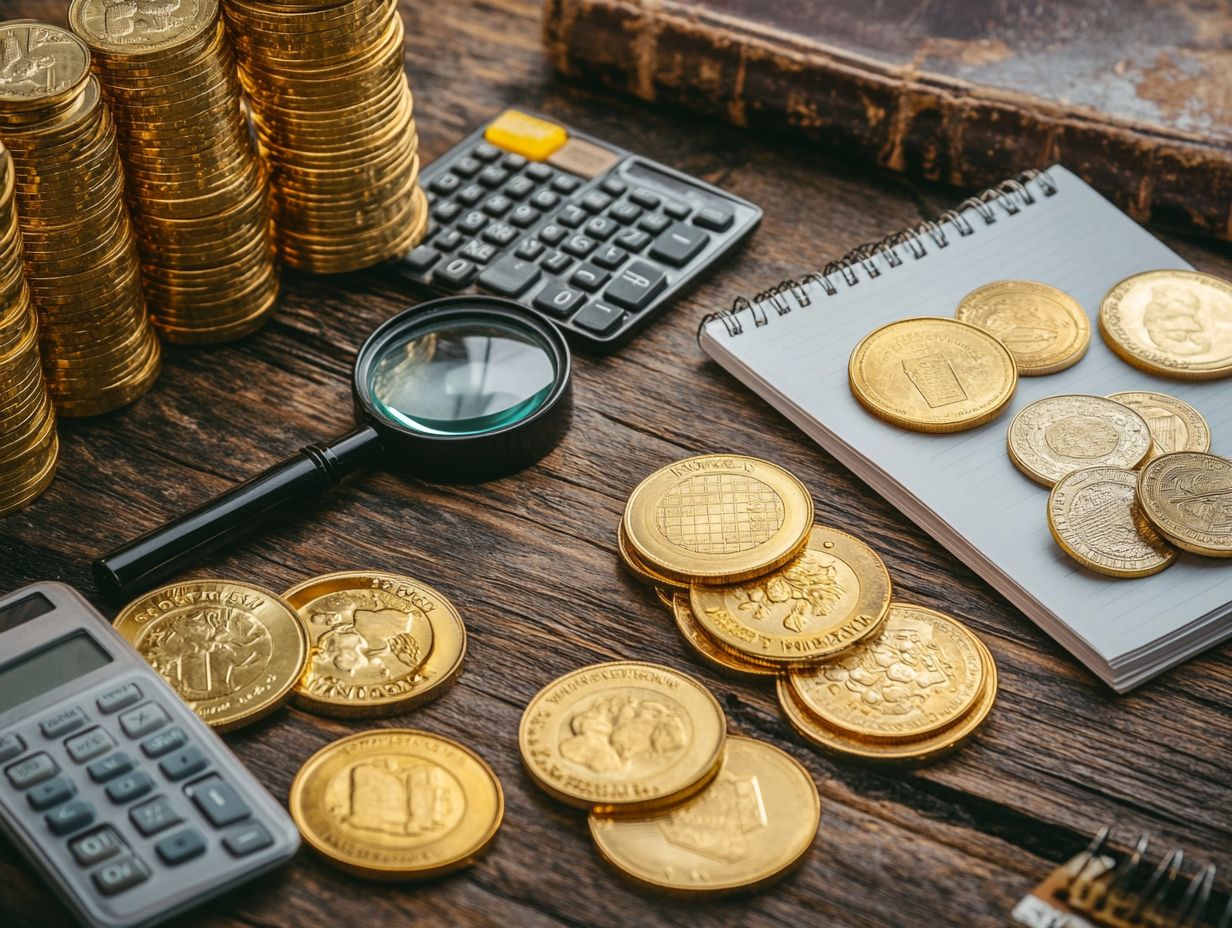
- Economic factors, supply and demand, and industrial uses all play a role in determining the value of precious metals.
- Understanding market value versus intrinsic value can empower your investment choices!
- Utilizing grading systems, professional appraisals, and staying informed about market trends can help you evaluate the value of precious metals.
What are Precious Metals?
Precious metals, like gold, silver, platinum, and palladium, are not just shiny objects; they are coveted commodities that have captured human interest for centuries. Their rarity, aesthetic allure, and many industrial uses make them highly desirable.
These metals often act as a safeguard against inflation and economic downturns, making them appealing options for investments. Ensuring the authenticity and quality of these metals is crucial for both buyers and sellers, as this helps keep their value strong!
Consider gold its allure extends beyond jewelry; it s also vital in electronics and even dentistry. Silver, too, has important roles, particularly in photography and solar energy technologies. Then there s platinum and palladium, which are critical in the automotive industry for catalytic converters, showcasing their versatility.
Historically, these metals have functioned as currency and stores of wealth, highlighting their enduring significance.
To navigate this world wisely, it s essential to understand different grading systems and certifications. This knowledge enables you to protect your investments, ensuring you re acquiring authentic, high-quality metals that will withstand the test of time.
Factors Affecting the Value of Precious Metals
The value of precious metals is shaped by many factors that can profoundly impact their market price and desirability. Economic conditions, supply and demand dynamics, and industrial applications all play significant roles.
Understanding these elements is vital for making informed financial decisions, whether you re a buyer seeking to invest wisely or a seller aiming to maximize your returns. Staying vigilant against potential scams and fraudulent practices is also essential for protecting your investment, ensuring that you engage only with reputable dealers.
Economic Factors
Economic factors play a crucial role in shaping the value of precious metals. As financial conditions shift, inflation rates fluctuate, and currency values change, you may notice significant price movements in these commodities. For example, during times of economic uncertainty, many investors gravitate toward gold as a safe haven, which can drive its market value higher.
It is imperative to grasp these economic dynamics if you’re looking to make informed financial decisions regarding precious metal investments.
Interest rates also significantly influence the appeal of these metals. When rates rise, they typically strengthen the dollar, which can diminish the appeal of precious metals. Thus, when central banks adjust interest rates in response to inflationary pressures, it often triggers movements in these asset prices.
Additionally, the interplay between geopolitical events and economic data releases frequently leads to increased volatility in precious metal markets. Staying informed about these indicators is essential for effectively navigating your investment strategies.
Ready to dive deeper into investing in precious metals? Let s explore together!
Supply and Demand
Understanding supply and demand dynamics is vital. Changes in availability or consumer interest can directly impact value.
For instance, if industrial demand for silver surges, you might witness a significant spike in its price. This brings both opportunities and investment risks for you as a buyer or seller. Recognizing these trends is essential for making informed financial decisions.
Global production levels evolve due to new mining technologies. Precious metals are increasingly linked with changing consumer trends. Innovations that enable more efficient extraction and processing are transforming the industry, affecting both availability and pricing.
The growing interest in sustainable and ethically sourced materials reshapes how you approach your investments. As consumers increasingly favor greener options, responsibly mined precious metals may command a premium, adding another layer of complexity to the supply landscape.
You must stay alert to navigate these complexities! A sharp understanding of broader economic indicators is essential.
Industrial Uses
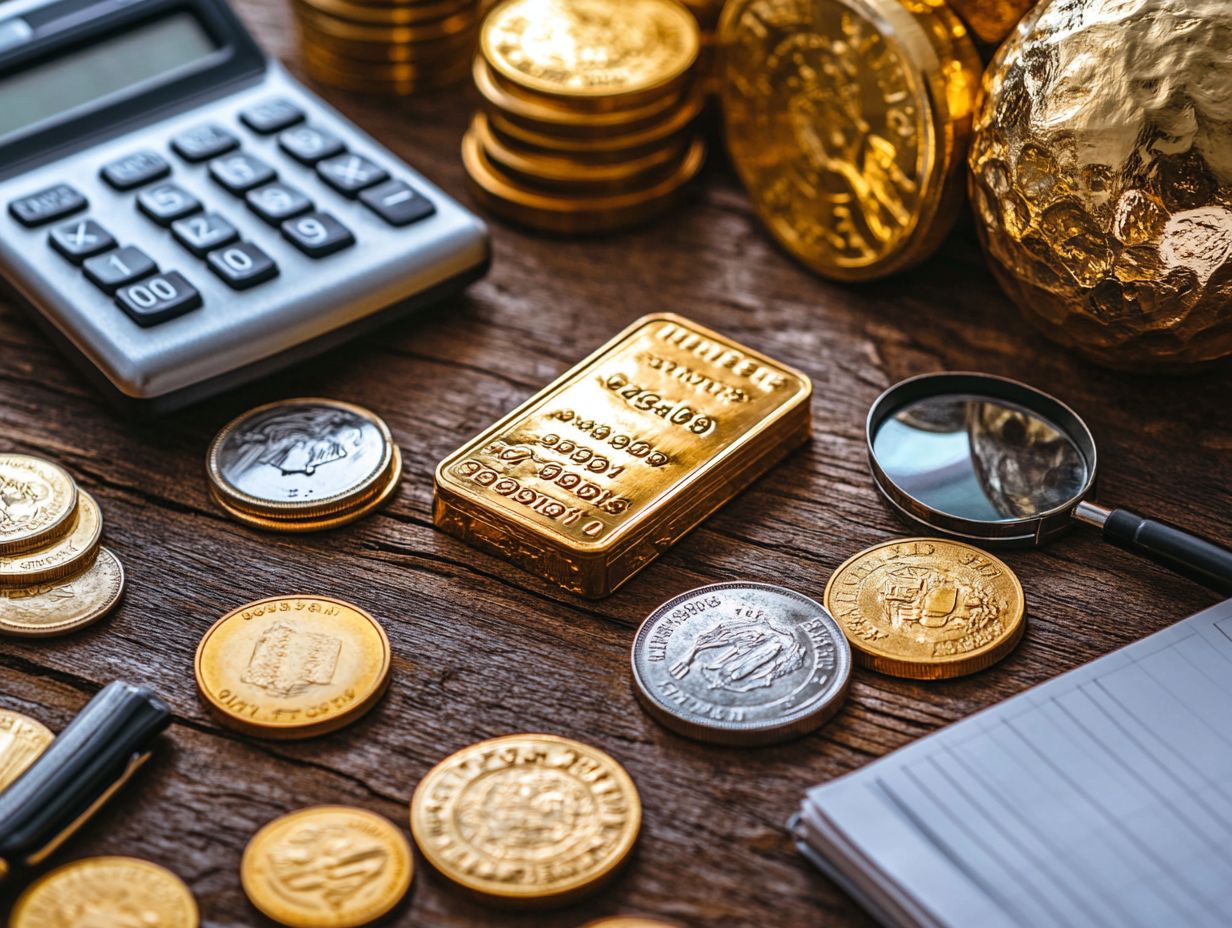
The industrial applications of precious metals think gold, silver, platinum, and palladium are significant in determining their marketability and overall value in the global economy.
These metals are critical across various sectors, including electronics, automotive, and jewelry. This creates a fascinating interplay between industrial demand and investment potential.
Take silver, for example; it’s a vital component in photovoltaic cells for solar panels. Meanwhile, palladium shines in catalytic converters, playing a crucial role in reducing emissions from vehicles.
This dynamic between industrial necessity and market speculation leads to price fluctuations. When demand spikes in technology sectors, you could see their value soar, impacting your investment decisions.
Gold, on the other hand, serves as a safe-haven asset during economic uncertainties. This further complicates its market dynamics.
Understanding these diverse applications will enable you to navigate the complexities of investing in precious metals. Recognize the intrinsic connection between industrial use and financial worth.
Methods for Assessing the Value of Precious Metals
Evaluating the value of precious metals requires a nuanced approach. It seeks to uncover both their market value and intrinsic worth, which are critical considerations for any potential buyer or seller.
You ll find that quality assessment techniques, such as hallmark verification and professional testing, are essential. These methods help determine purity levels, which measure how untainted a metal is, and authenticity, offering a comprehensive understanding of the metal s true worth.
Grasping these methods can profoundly impact your financial decisions in the precious metals market.
Market Value vs. Intrinsic Value
Understanding the distinction between market value and intrinsic value is essential for you as an investor in precious metals. This understanding can significantly influence your financial decisions and strategies.
Market value represents the current price you could receive for the metal in the marketplace. Intrinsic value delves deeper, considering its underlying worth based on factors like purity and industrial demand.
A clear grasp of both concepts is vital for navigating the complexities of precious metal investments. As you assess market trends, recognize how fluctuations in supply and demand can drastically impact market value, often swayed by geopolitical events and economic indicators. To further enhance your understanding, learn how to calculate the value of your precious metals.
Intrinsic value tends to be more stable, reflecting the inherent qualities of the asset, such as its rarity or historical significance. By weighing these factors carefully, you can formulate more effective strategies, allowing for informed decisions about when to buy or sell.
Ultimately, understanding the relationship between market and intrinsic value will equip you with the insights needed to optimize your portfolio and achieve your long-term financial goals.
Assessing Purity and Quality
Assessing the purity and quality of precious metals is essential. It guarantees you receive exactly what you’re paying for, as these elements significantly impact the overall value.
Techniques such as visual inspections, weight tests, density assessments, and chemical analysis are vital. They help you confidently assess the value of your metals.
Engaging in professional testing provides certification that assures authenticity. This enables you to make informed decisions and protect your investments.
To elevate the reliability of quality assessment, experts often utilize specialized instruments like X-ray fluorescence (XRF) analyzers. These tools can accurately determine metal composition without damaging the sample.
Fire assay techniques are regarded as the gold standard for measuring gold content. They involve melting a sample with fluxes to isolate pure gold from other materials.
These methods, along with spectrometry, contribute to a comprehensive understanding of the metal’s characteristics.
By choosing certified laboratories, you can ensure that your metals are authenticated by seasoned professionals. This adds a layer of assurance that translates into greater trust and confidence in your acquisitions.
Tools for Evaluating Precious Metals
You have a wealth of tools and methods at your disposal for evaluating precious metals. These resources allow you to accurately determine their quality and value.
Ranging from straightforward visual inspections to sophisticated professional appraisals, these tools enable you to assess crucial factors such as purity levels and marketability. This ensures that your financial decisions are grounded in reliable data.
By familiarizing yourself with these evaluation tools, you can effectively reduce investment risks and make informed choices.
Grading Systems and Standards
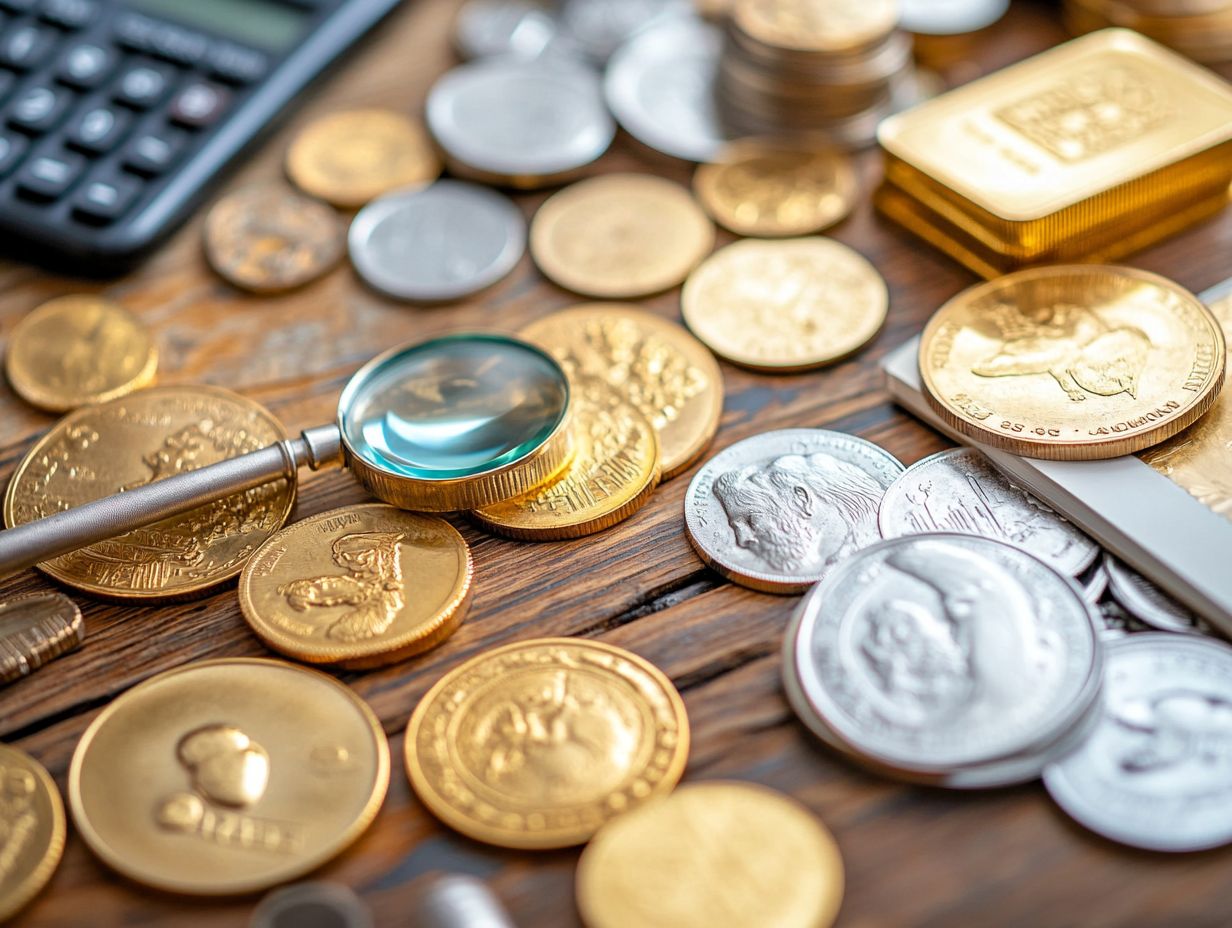
Grading systems and standards are critical for assessing the quality of precious metals. They provide you with a structured approach to evaluate their condition and value.
These standards may differ from one country to another. They often feature specific hallmarks and stamps that indicate purity levels and authenticity.
By understanding these grading systems, you enable yourself to make informed investment decisions. This ensures you acquire high-quality metals that align with your investment criteria.
Various countries utilize distinct grading systems, such as the American Numismatic Association’s guidelines or the European Precious Metals Association standards. These systems not only authenticate the metals but also determine their market value.
For instance, a gold coin adorned with a national hallmark serves as a testament to its authenticity and purity, instilling confidence in your investment.
By familiarizing yourself with the intricacies of grading, you can significantly impact the resale value of your assets. A thorough understanding of these standards is essential for anyone involved in the precious metals market.
Professional Appraisals
Professional appraisals are essential for accurately evaluating precious metals. They provide the assurance often needed for high-value transactions.
Typically conducted by certified experts from reputable certification agencies, these appraisals employ various testing methods to confirm purity and authenticity. Engaging in professional appraisals significantly reduces the risks associated with scams and fraud in the precious metals market.
These evaluations are a fundamental step in establishing fair market value. This ensures that you, as both a buyer or seller, have a clear understanding of your asset’s worth.
This level of transparency fosters trust and enhances the transaction process. It allows you to navigate the complexities of the precious metals market with confidence.
In today’s landscape of online trading, a reliable appraisal can heavily influence your investment decisions. It validates the quality and legitimacy of the metals you’re considering.
Buyers like you often seek out certified appraisers to ensure the security of their investments. Meanwhile, sellers leverage these evaluations to price their assets competitively based on current market conditions.
Don’t wait! Start assessing the quality and purity of your precious metals today to secure your investments.
Tips for Investing in Precious Metals
Investing in precious metals requires a thoughtful approach that includes effective strategies for navigating market trends and understanding the associated risks.
Your understanding of reputable dealers and the importance of seller verification is crucial for ensuring that your transactions are secure and legitimate.
By staying informed about market conditions and applying sound investment strategies, you can protect your financial choices and enhance your potential returns.
Diversification and Risk Management
Diversification is essential in the precious metals investment landscape. Spreading your investments across different types significantly reduces the impact of market volatility.
Consider incorporating metals like gold, silver, platinum, and palladium into your portfolio. This balanced approach not only enhances stability but also boosts your potential returns.
Understanding the principles of diversification is vital for grasping the basics of investing in precious metals.
Additionally, use strategies like dollar-cost averaging investing a fixed amount at regular intervals to lessen the effects of price changes and regular rebalancing to manage risk effectively. Regular rebalancing ensures that your investments don t become overly concentrated, thereby reducing exposure to potential market downturns.
If you prefer a hands-off approach, consider incorporating ETFs or mutual funds focused on precious metals. These options provide instant diversification and are appealing if you lack the expertise for direct investment management.
Staying Informed About Market Trends
Staying informed about market trends is crucial for making sound financial decisions in the precious metals market. Fluctuations can significantly impact your investment value.
By monitoring economic indicators, news, and expert analyses, you can better understand market conditions and adjust your strategies.
Utilizing tools like financial news websites, analytics platforms, and market prediction apps improves your ability to track and interpret market signals.
Subscribing to financial newsletters and following industry experts on social media offers valuable insights into emerging trends and shifts in investor sentiment. Engaging in online forums and attending webinars fosters discussions that deepen your understanding.
Mastering the basics of technical and fundamental analysis helps you recognize patterns and make informed predictions, ensuring that your financial choices are strategic.
Frequently Asked Questions
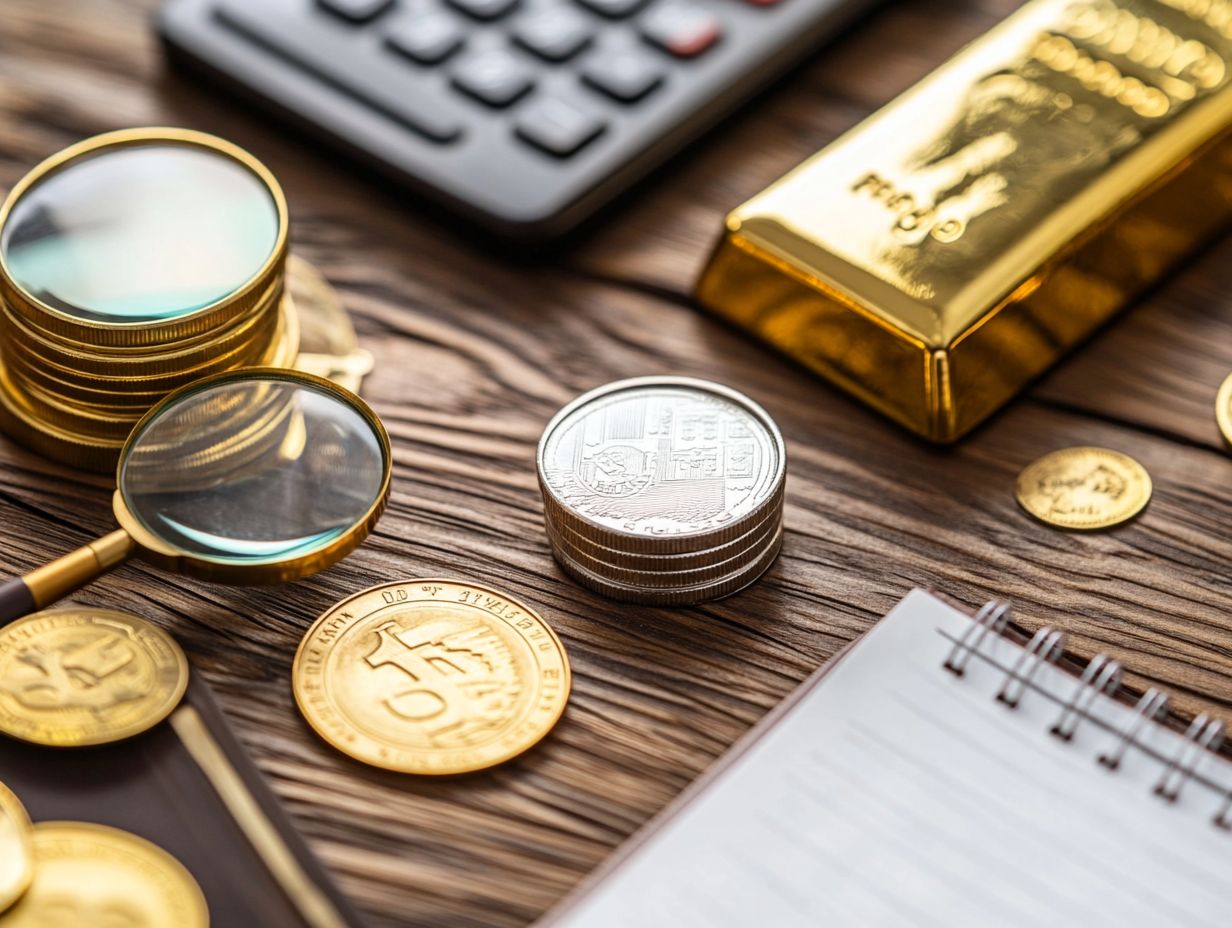
1. What are the different methods used to assess the value of precious metals?
The most common methods to assess precious metals include the spot price, weight and purity, market demand and trends, and the metal’s industrial uses.
2. How does the spot price determine the value of precious metals?
The spot price reflects the current market value of a metal, influenced by factors like supply and demand, economic conditions, and geopolitical events.
3. Why are weight and purity important in determining the value of precious metals?
Weight and purity are significant because they directly affect the metal’s market price. Higher purity and weight often result in higher value.
4. What role do market demand and trends play in assessing the value of precious metals?
Market demand and trends are essential in determining the value of precious metals. High demand for a metal can increase its value, while low demand can decrease it.
Ready to start investing in precious metals? Explore your options today!
5. How do the industrial uses of precious metals affect their value?
Precious metals like gold and silver are essential in electronics, medicine, and jewelry making. Their demand in these industries significantly influences their market value.
6. What other factors can impact the value of precious metals?
Several factors can also affect the value of precious metals. Inflation, currency exchange rates which represent how much one currency is worth compared to another and political stability should all be considered when assessing precious metals’ value!
